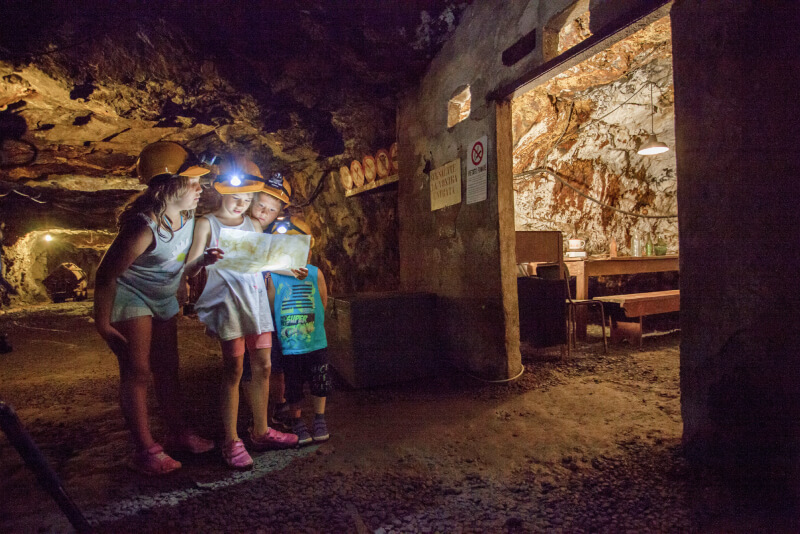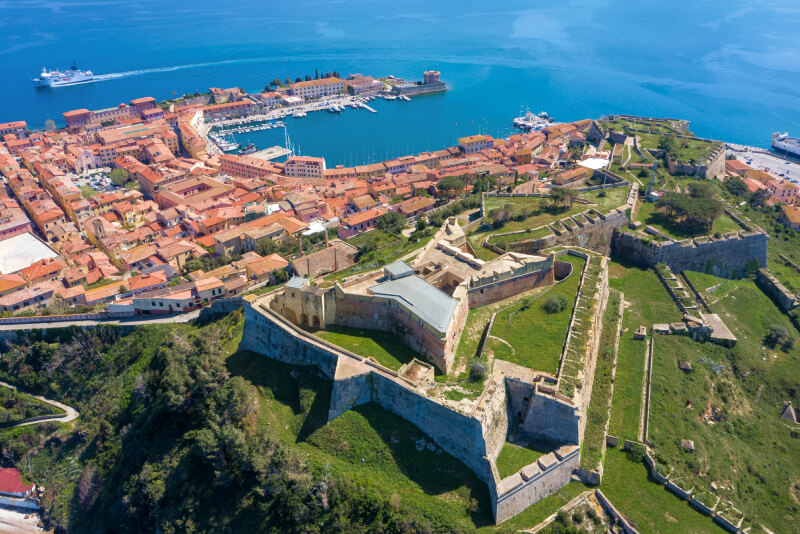Art
and History
The Island of Elba, beyond being a beloved holiday destination for thousands of tourists, preserves traces of its rich past within its mines and historic fortifications open to visitors.
Prepare for a journey through time and immerse yourself in the island’s true culture!
A MILLENNIA-OLD HISTORY
Elba has an ancient history dating back to the Etruscans, who were the first to exploit its rich mineral resources.
As early as the 9th century BC, this sophisticated civilization was extracting and working Elban iron, exporting it across the Mediterranean and contributing to the economic and cultural development of the region. Later, the Romans continued mining activities and built luxurious villas along the coast, drawn to the island’s stunning landscapes and thermal waters.
Remnants of this era are still visible in archaeological finds and the remains of ancient furnaces.

THE MINING PARK
The iron mines, exploited since ancient times, shaped both Elba’s economy and landscape for centuries.
During the Middle Ages and early modern period, the island was contested by powerful states such as the Medici family and the Spanish, who valued its vast mineral wealth. Mining continued until the 20th century, transforming large areas with open-pit quarries and industrial facilities.
Today, the Elba Mining Park allows visitors to explore these historic mines and learn about the island’s iron extraction history and the hard labor of the miners. The mining heritage is still reflected in the island’s landscape and traditions, making Elba a fascinating place where nature and history intertwine.
NAPOLEON’S VILLAS
One of the most famous periods in Elba’s history is Napoleon Bonaparte’s brief exile in 1814. Following his abdication, the emperor was sent to the island, where he stayed for around ten months. Despite his short time on Elba, Napoleon left a lasting impact, reorganizing administration, improving infrastructure, and promoting agriculture.
His residences, Villa dei Mulini in Portoferraio and Villa San Martino in the island’s interior, are now museums that tell the story of his stay and the influence he had on Elban society.
THE MEDICI FAMILY ON ELBA
The Medici fortresses on Elba are remarkable remnants of the island’s defensive and strategic past. Built by the powerful Medici family in the 16th century, these massive fortifications were designed to protect Elba from enemy attacks and to control Mediterranean trade routes.
The Fortress of Portoferraio, with its four-tiered bastions, is one of the most prominent and best-preserved examples.
The Fortress of Volterraio and the Fort of San Giovanni complete the defensive system, offering breathtaking views and an immersive journey into Elba’s military history.

MUSEUMS FOR EVERY INTEREST
Elba is home to various museums that showcase its rich past.
In addition to Napoleon’s residences, the Archaeological Museum of Marciana and the one in Portoferraio preserve Etruscan and Roman artifacts, bearing witness to the ancient civilizations that once inhabited the island.
The Mining Park in Rio Marina allows visitors to explore historic iron mines, while the Linguella Museum, located in a Medici fortress, houses exhibits related to Elba’s maritime history.
These sites offer a fascinating journey through time, revealing the island’s many historical identities.
For more information, visit the website of the Tuscan Archipelago Museum System.
Discounted ferry tickets
With Camping Reale, you get DISCOUNTS ranging from 20% to 35% on 80 Moby & Toremar departures to and from PORTOFERRAIO, RIO MARINA, and CAVO.

